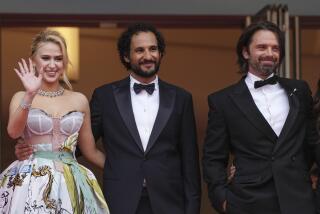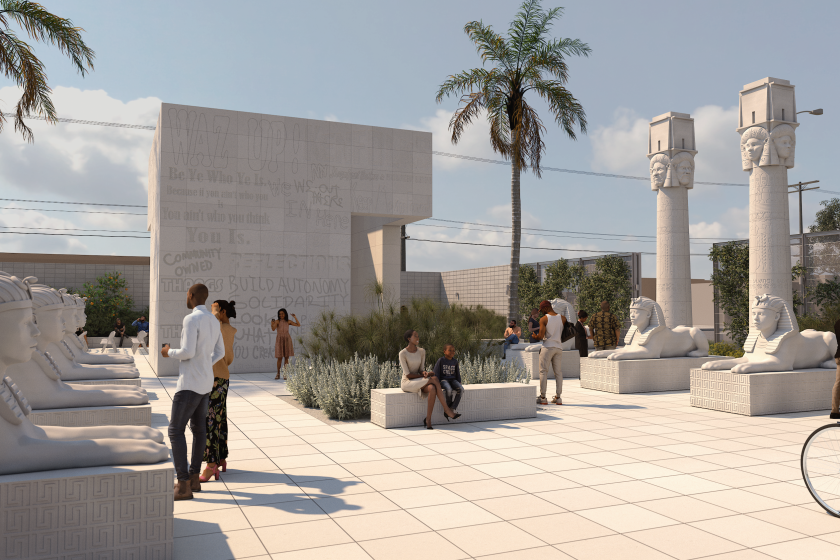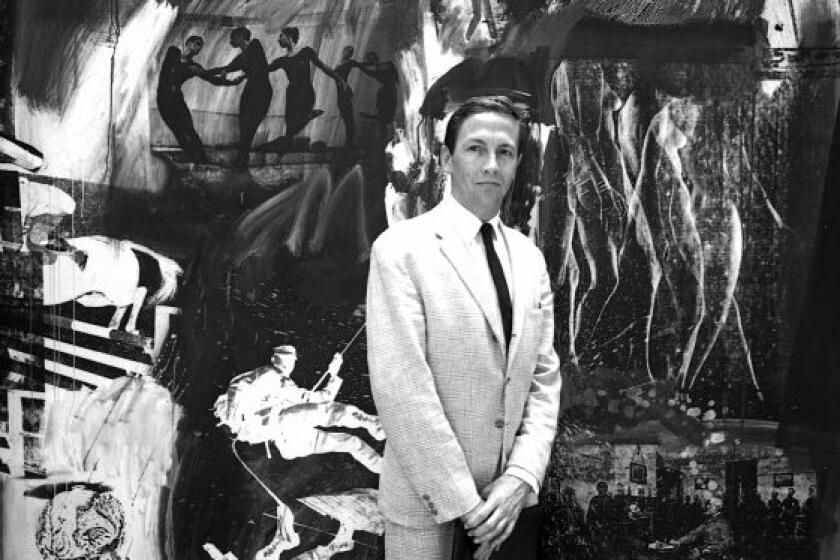Curtain Not Art by Law
City Atty. Mark Sellers has a degree in law, not art theory.
But he knows a work of visual art when he sees one, and he says the copper curtain hanging from the Civic Arts Plaza doesn’t qualify.
In an opinion issued Thursday, Sellers argues that the much-maligned collection of 2,000 metal strips hanging outside the city hall and performing arts center “has no intrinsic artistic value.”
Under legal definitions, the copper curtain is not a sculpture. Rather, it’s an architectural feature of the building. It was designed by an architect and built by a contractor, and the city has every right to revamp or remove it without the consent of its creator.
That’s the advice Sellers gave members of the Thousand Oaks Arts Commission, who are charged with revamping the perplexing copper wall hanging. Uncertain what they could do, commissioners asked Sellers for his legal opinion.
Thursday night, wrestling with the weighty question of what constitutes art, they criticized the city’s legal analysis of the copper curtain, which some residents dubbed “the refrigerator’s backside.”
They said the copper curtain may not be pretty or popular, but that the city should not try to change it without talking to Antoine Predock, the renowned architect who designed the Civic Arts Plaza. Altering the copper curtain may not break the law, but it surely would violate artistic principle, commission members said.
“It’s a very political issue and it seems to be a highly visible issue as we stare at it every day,” said Karen LaFleur, chairwoman of the arts commission. “Regardless of whether you like it or not, I think you still have to consider the artist’s feelings. Before you go out and paint a happy face on the building, you have to consider this.”
Commissioners voted unanimously to invite Predock to come to Thousand Oaks and discuss the copper curtain at a future meeting.
And in a move commissioners said was intended to please everyone involved, they referred to Predock as an “architect / artist” in the motion preceding their vote.
Thousand Oaks residents and travelers on the Ventura Freeway have puzzled over the metal structure on the south side of the Civic Arts Plaza, which opened in 1993.
Officials are considering several plans to alter the curtain, including a Port Hueneme man’s proposal to turn it into a colorful contemporary painting. A Thousand Oaks sign maker wants to transform it into a mural advertising the Civic Arts Plaza. The commission has a $10,000 budget to alter the curtain.
Earlier this month, LaFleur wrote to Predock, stating that the group “strongly believes in the moral rights of the artist” and does not want to change the copper curtain without his input. They also asked Sellers for his legal advice.
Sellers’ opinion was simple: “A ‘sculpture’ generally can be relocated and still have artistic value or look like a work of art. The copper curtain is merely a line of copper strips attached to the wall,” the attorney stated. “There is no message, theme or image on the copper curtain. . . . Therefore, it can be altered or removed without the consent of the architect.”
But in a letter to the arts commission, Predock called the curtain a work of art.
The copper curtain, Predock wrote, was meant to represent the new theater inside the Civic Arts Plaza and the beautiful, breeze-filled landscape of the Conejo Valley.
“The Copper Curtain was conceptualized, designed and detailed as a piece of art which operated on many levels. . . ,” he wrote.
His original plans would have allowed the metal strips to flutter in the breeze, mimicking the movements of an actual cloth curtain. But fearing that motorists would be hit by flying metal, officials ordered the copper fastened to the building’s wall.
“My wish would be to propose that the Curtain be ‘altered’ back to my original design,” Predock wrote.
More to Read
The biggest entertainment stories
Get our big stories about Hollywood, film, television, music, arts, culture and more right in your inbox as soon as they publish.
You may occasionally receive promotional content from the Los Angeles Times.






